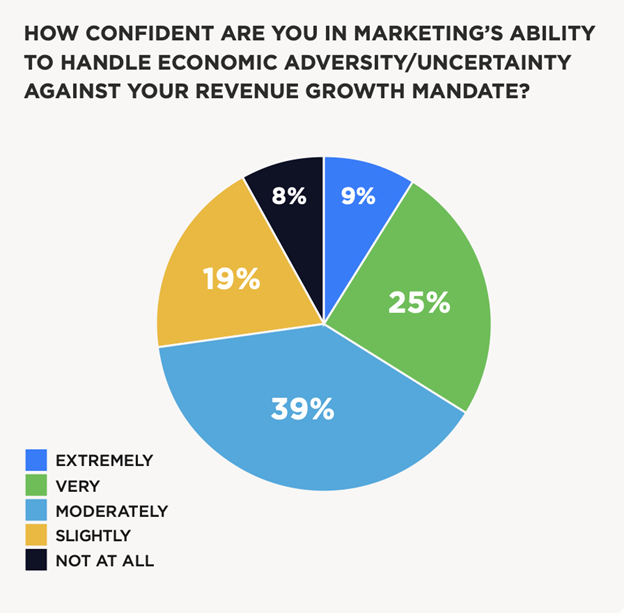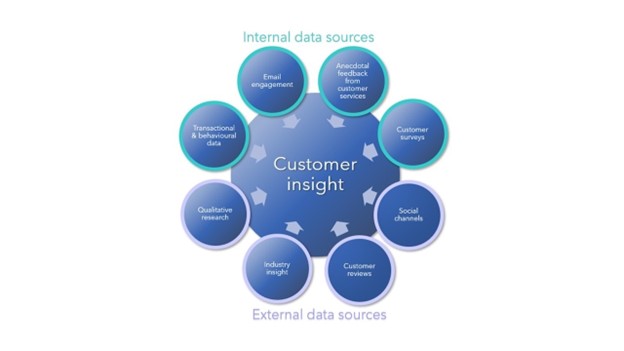How to Reach Your Target Audience in Stressful Times
Our world has never been more uncertain than over the last few years. The external environment—from economic shifts to worldwide pandemics to political volatility and social responsibility issues—are reshaping consumer behaviors and market landscapes, demanding businesses adapt and respond swiftly. Knowing how to reach your audience during these stressful times is essential.
This article will cover the strategies you need in your arsenal to keep relationships stable when markets are anything but. When you’re done reading, you’ll know the key components needed to build a resilient marketing and communications strategy that performs under any conditions.
Quick Takeaways:
- External factors that impact businesses include: economic shifts, regulatory changes, political events, sociocultural trends and more.
- Enhancing internal communications enables your teams to collaborate on reaching audiences more effectively.
- By adopting the right software and technology tools, you can execute tailored and personalized communications at scale.
- Empathy is the key to developing content and messaging that resonates with audiences, and ultimately building trust and connection during stressful times.
External Market Factors: How They Impact B2B Marketing
Marketing strategies are constantly influenced by the external environment. In order to reach your target audience no matter what the circumstances, it’s essential that your business can recognize and adapt to these changes seamlessly—even in times of stress. Some of the most pressing market factors that impact businesses today are:
- Economic Shifts: Economic changes significantly influence consumer spending habits. During economic downturns, consumers tend to become more cost-conscious, while in a booming economy, consumer confidence and spending often increase. This directly impacts marketing and sales opportunities.
- Global Events: Events such as pandemics or political changes can drastically alter market landscapes. For example, the COVID-19 pandemic led to a surge in online shopping and digital services, while political events can affect regulatory environments and consumer sentiment.
- Regulatory Changes: Legislative and regulatory changes can have a profound impact on B2B marketing strategies. New regulations might necessitate changes in how your company collects data, advertises products, or engages with customers.
- Technological Advancements: Advancements in technology can revolutionize how businesses interact with their target audience. The rise of AI, machine learning, and big data analytics, for instance, has transformed personalized marketing, customer service, and predictive analysis.
- Socio-cultural Trends: Shifts in societal values and cultural trends influence B2B buying behaviors. For example, an increased focus on sustainability or corporate responsibility can lead businesses to prefer companies that demonstrate these practices.
- Competitive Landscape: Changes in the competitive environment, such as new entrants or shifts in competitor strategies, can create new industry dynamics between customers and businesses.
These and other external factors directly impact your audiences (and your ability to reach them). They can create shifting priorities in response to changes in the landscape, new needs and concerns, and shifts in behaviors and preferences.
For businesses, this can be understandably stressful. Today, only 39% of marketing leaders say they are extremely confident in their marketing department’s ability to handle economic adversity or uncertainty, and more than a quarter say they’re only slightly confident or not confident at all.

So: What separates businesses from those who can navigate uncertainty successfully and those that struggle to do so? In short, it’s putting an operational and strategic foundation in place that allows them to be agile in any circumstance, collaborating with ease and making informed decisions quickly.
In the next section, we’ll take a closer look at six ways to build this foundation so your business can grow reliably under any external circumstances.
How to Reach Your Target Audience—Even Under Stress
Marketing adversity and other types of uncertainty demand intentional, strategic approaches to building and maintaining connection with your audience. Below are 6 proven tactics for achieving this goal:
1. Enhance Internal Communication
In today’s rapidly changing business environment, the ability to reach your target audience effectively, especially under stress, hinges significantly on robust internal processes. Two key aspects of enhancing these processes are streamlining internal communication and investing in technology.
Efficient internal communication is critical for swift and effective decision-making, a necessity in times of market volatility or stress. Streamlined communication channels ensure that vital information reaches the right people at the right time, enabling quick responses to emerging market trends and customer needs.
Implementing tools like collaborative software, centralized information repositories, and cross functional meetings can help you maintain clarity and consistency in communication. This structure enables a unified approach to market shifts and ensures that all employees are aligned with the company’s planned strategic response.
2. Invest in Technology for Real-Time Data Analysis and Insights:
In an era where data is king, investing in technology that offers real-time data analysis and insights is indispensable. Tools like CRM systems and business intelligence platforms can provide businesses with a deep understanding of market dynamics and customer behavior.
These technologies can enable your business to anticipate changes in customer preferences, track the effectiveness of marketing strategies, and adjust tactics promptly. By harnessing the power of real-time data, companies can make informed decisions swiftly, ensuring they reach their target audience and remain relevant and effective, regardless of external pressures or stressors.
3. Focus on Customer Insights
In a rapidly evolving market, staying attuned to your audience is more important than ever. Focusing on customer insights involves ongoing research and the intelligent use of data to understand and adapt to changing customer priorities and concerns. Techniques such as surveys, social listening, focus groups, and direct customer feedback provide invaluable insights into customer sentiments and preferences.

Regularly engaging with your audience through these channels helps in gathering real-time feedback and also demonstrates your commitment to meeting their needs.
This ongoing dialogue allows you to make adjustments in your strategy and messaging that resonate with your audience’s current state and expectations.
1. Utilize Data to Track Shifting Customer Priorities and Concerns
Leveraging data analytics tools to interpret customer behavior and feedback is crucial in gaining a comprehensive understanding of your audience. Analyzing trends, purchase patterns, and engagement metrics can reveal shifts in customer priorities and concerns, particularly during challenging times.
This data-driven approach enables you to anticipate changes in customer behavior and adjust strategies accordingly. By understanding these shifts, you can tailor your marketing messages to address the current pain points and preferences of your target audience, ensuring relevance and resonance in your messaging.
2. Communicate with Empathy
In times of stress or uncertainty, the way you communicate with your audience can significantly impact your brand’s perception and effectiveness. Empathy in this realm is crucial, and can benefit your business from both an internal and external perspective.
Today, 82% of CEOs believe that empathy drives better business outcomes, and 72% of employees say it increases their motivation.

To connect with your audiences even when times are challenging, craft empathetic messages that show you understand the emotional state and needs of your audience during uncertain times. This means conveying messages that acknowledge the challenges your audience is facing while offering solutions, support, or information that can assist them.
Your messaging should be clear, compassionate, and relevant, avoiding insensitivity to the prevailing circumstances. It’s all about striking a balance between being informative and empathetic, ensuring that your content aligns with the current context and the sentiments of your audience.
1. Leverage Digital Channels
Thanks to digital technology, businesses can stay connected to their audiences in any circumstances. In an environment marked by stress or upheaval, this becomes even more crucial. Digital channels provide a direct and immediate way to reach audiences, which is essential when other communication methods may be disrupted.
In times of crisis or change, people often turn to digital platforms for information, community, and support. Leveraging these platforms allows businesses to offer timely updates, share helpful resources, and maintain a presence in their customers’ lives.
Social media, email newsletters, and web content (and similar channels) can all be adapted quickly to changing circumstances, enabling businesses to respond in real-time to evolving audience needs. It’s also a space where businesses can show solidarity, provide comfort, and foster a sense of normalcy, even when the external environment is anything but normal.
Trust: The Key to Connection
The strategies we outlined in this article are all anchored in a single, fundamental principle: building and maintaining trust with your audience. Whether through optimizing your business’s internal processes, enhancing your external communications, or refining your brand values, each approach aims to foster a genuine, trustworthy connection that’s resilient even in times of adversity.
This trust is the bridge that sustains relationships when markets are volatile or the future uncertain. By prioritizing trust in your strategies, you reassure your audience of your commitment to their needs and values, creating a sense of stability and reliability.
Trust is not just a component of successful marketing—it’s the cornerstone of lasting relationships. By adopting these trust-centered approaches, you position your brand not just to survive challenging times, but to thrive and grow, building a loyal and engaged audience.
Televerde empowers industry-leading companies across sectors and regions, including numerous Fortune 500 firms, with consistent revenue growth and robust lead generation. Our resilient, scalable business model ensures steady pipeline velocity, even amidst shifting market conditions.
Learn more here about how Televerde can help your business grow.


